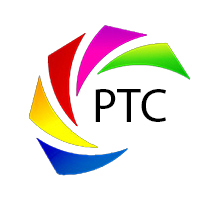Color Tuning of Materials and Devices
Color tuning refers to the ability of adjusting the color emission of materials (phosphors or quantum dots) or devices (LEDs, OLEDs, etc.). This can be done using material science or device engineering. Tunability of quantum dots (QDs) is generally achieved by varying their particle size during colloidal synthesis. This is accomplished by changing the time and/or temperature of the colloidal solution in which the QDs are being grown.
Tunability of phosphor systems is more limited but can sometimes be achieved by changing the material host or doping compositions. In the traditional blue-to-yellow garnet phosphor system used in white LEDs, both greenish and reddish emission colors can be achieved. A green color shift can be achieved by substituting Lu or Ga for some or all of the yttrium (Y) in Y3Al5O12:Ce. A red color shift is achieved by substituting Gd for some or all of the yttrium. Another way to produce a red color shift is by using Pr as a co-dopant to achieve a YAG:Ce,Pr phosphor. In the orthosilicate phosphor system (Sr,Ba,Ca)SiO4:Eu, color tuning can be achieved by adjusting the Sr/Ba/Ca ratio. Similar effects can be achieved in some nitride-based phosphor systems.
LED Color Tuning
It is also possible to achieve color tunability on the device level using a range of different phosphors coupled to one or more type of LEDs. For example, multicolor red, green, blue, and white (RGBW) LEDs can be controlled individually to produce a tunable color spectrum. Alternatively, UV, violet, or blue LEDs can be combined with various phosphors to produce a tunable device or light engine. The videos found at this link show examples of white color tunability between daytime sunlight and warm white. This was achieved using only one type of LED at 385nm but with different RGB phosphors across the visible and even some near-infrared materials.

